This story was first published in the magazine ARIANA.
Martha waited, practising the breathing techniques her virtual life coach had taught her. After a few minutes, a smiling Relations Agent joined her, slinking towards her high table through the hanging vines of the augmented reality lounge.
Martha was accustomed to these artificial venues. The high temperatures, poor air quality, and constant risk of storms meant people often stayed indoors. That was the case for most of her friends, anyway; even though they all lived within the SHaM Triangle (Shenzhen, Hong Kong and Macao), she hardly ever saw them. They’d hook up their hologrammes for brunch every Saturday, take virtual trips to Phuket once a year… but the times they actually met in the flesh? Those days were long gone.
The Relations Agent waited a moment, blinking, then spoke in a slow, soothing tone: “Hello Martha. My name is Toni and Iʼm here to help you find your True Family. What can I do for you today?” A bot, Martha assumed. She tried to replicate that same laid-back tone, but when she replied, her voice tensed up, coming off a pitch too high. She felt a lump form in her throat.
“Iʼm looking for a daughter.”
“And Iʼm sure we can find her for you, Martha. Could you start by describing her?”
Again, Marthaʼs voice stalled, making her think of a manual car going uphill in the wrong gear – a situation few these days had experienced. Describe her. Her daughter Abigail, now almost 40, loomed large in her mind: her messy curly hair and ruddy cheeks, her deep, curious eyes, always questioning her mother, pushing back. “What on earth are you doing?” she asked herself, taking on her daughterʼs reproachful tone. Another voice piped up from her gut, defending her decision: “Youʼre not here anymore, Abigail. I need this.”
“Sheʼs in her late 20s. Poised, smart, good sense of humour.” Her voice was loosening up as her dreams of a new daughter took shape. “She has many interests, particularly making things – she models whole cities with her friends! And then she likes to come home and eat dinner with me. Sometimes we take virtual trips together. Sheʼs open-minded, easy-going…”
“She sounds delightful! And what does she look like?”
Abigail, or Abi, as she called her – surged back into view: aged 12, her thick plaits swinging as she pretended to be a pirate on her VR ship; aged 28, her green eyes shining after swapping her screen-damaged lenses for a lab-grown pair; in her 30s, her hair billowing as she waved from the ferry…
“Short hair, brown eyes, not too tall, slim-build.”
“Let me have a look in our database… Youʼre in luck! We have a couple of actresses available, so letʼs go with the best. When would you like to meet her?”
“Oh, um… later this week? Is Thursday possible?”
“Thursday it is. At your house? She can come around 6.30pm, right on time for dinner?”
“Perfect. And her name?”
“Thatʼs up to you!”
“Oh. Doesnʼt she have a name?”
“Sheʼs on file as Lynn.”
“Lynn it is then.”
And so it was done. Martha had a date booked with her first rent-a-daughter. She logged out of the lounge, removing her VR suit, and suddenly felt claustrophobic in her Hong Kong flat. She switched her augmented window view from cityscape to forest canopy, then sent a quick notification to her virtual life coach: task complete. Immediately, the ʻtree of lifeʼ on her wall – a free ʻinner mirrorʼ that had come with the coaching package – bore a little pink pineapple. Nice touch, she thought.
[[{“fid”:”9332″,”view_mode”:”default”,”fields”:{“format”:”default”,”alignment”:””,”field_file_image_alt_text[und][0][value]”:false,”field_file_image_title_text[und][0][value]”:”Futures Fiction”},”type”:”media”,”field_deltas”:{“1”:{“format”:”default”,”alignment”:””,”field_file_image_alt_text[und][0][value]”:false,”field_file_image_title_text[und][0][value]”:”Futures Fiction”}},”attributes”:{“title”:”Futures Fiction”,”class”:”media-element file-default”,”data-delta”:”1″}}]]
A NEW NORMAL
It had been a month since Abigail announced she was going to stay on New Hainan Island.
“Stay? You mean another year, my love?”
“No Mum, I mean stay. I just feel like my lifeʼs here now, not in Hong Kong.”
The words had hurt. ʻMy life…ʼ Martha had accepted it, of course. She had worked on letting go. She had tried to look curious, encouraging even. She felt proud of her daughter, the adventurer, spending her life developing whole ecosystems on an artificial island.
New Hainan Island had roused interest across the world, the most successful of 25 artificial new territories included in Chinaʼs 2035 Population Plan. Abigail had visited for the first time 10 years ago. She had been the youngest member of the ecosystem regeneration team, selected from thousands of specialists in the growing discipline of Living Systems Design.
“Itʼs like landscape architecture crossed with life sciences and a splash of genetics,” sheʼd explained
to Martha. “The grand idea is to make conservation redundant. Instead, we create new ecosystems that can look after themselves.” Whatever it was, it had been a big career break for Abi. For Martha, it had signified her daughterʼs break-away.
“Imagine, Mum! These islands will help us cope with so many global crises! Climate refugees, population growth, urban sprawl, sea level rise, biodiversity loss, agriculture…”
China had announced the plan for the islands shortly after the terrible Sea Surge of 2034. In March that year, huge torrents swept through parts of Shanghai, Dongguan and Guangzhou, leaving thousands of survivors in urgent need of rehabilitation. Hong Kong had taken in as many displaced mainlanders as possible – and they kept coming.
Now it was 2050, and the old island was crammed with more than 30 million inhabitants. The picturesque peaks known as the Twins offered some of the islandʼs most sought-after housing: multi-million-dollar ʻhobbit holesʼ buried in the mountainside, looking out at sprawling 250-storey blocks below. But the endless developments had their own problems.
In 2047, the 50th anniversary of HKʼs return to China, hundreds had died from Nipah virus, a zoonotic disease transmitted from animals to humans, its outbreak triggered by the loss of natural habitats to construction.
Abi had been outraged by this.
[[{“fid”:”9333″,”view_mode”:”default”,”fields”:{“format”:”default”,”alignment”:””,”field_file_image_alt_text[und][0][value]”:false,”field_file_image_title_text[und][0][value]”:”Futures Fiction”},”type”:”media”,”field_deltas”:{“2”:{“format”:”default”,”alignment”:””,”field_file_image_alt_text[und][0][value]”:false,”field_file_image_title_text[und][0][value]”:”Futures Fiction”}},”attributes”:{“title”:”Futures Fiction”,”style”:”height: 452px; width: 900px;”,”class”:”media-element file-default”,”data-delta”:”2″}}]]
“It was so obviously going to happen: an exact repeat of the Nipah crisis in Kerala, almost 30 years ago in 2018! There, it was the fruit bats that lost their natural habits to rapid urbanisation, ending up in close contact with humans. But back then there wasnʼt the same awareness about how zoonotic diseases are transmitted from animals and even plants. We have no excuse today. What made us think we could rake up the snakes without some sort of comeuppance?”
It was this sort of crisis that Abigail believed could be avoided through ecosystem design: this was her chosen mission. For the first few years on New Hainan Island, sheʼd been designing a habitat to withstand storm and disease. Martha would tune into HighSight (Abiʼs team satellite monitor) and find her tending mangroves to keep the soil from slipping away into the rising waters. Later, her focus had shifted to restoring endangered and extinct species, using the island as an incubator. Today, New Hainan Island was a global poster-child for ecosystem regeneration. Abigail had increasingly taken more pride in her work. Her decision to stay and bask in it wasnʼt all that surprising.
A PAST LIFE
While her daughter had no problem moving to an island that was only 15 years old, Martha was from a different generation. She craved home, heritage, history. She was born in the former United Kingdom, when it was still part of Europe, to parents who indulged their easy access to splendours like the Alhambra of Granada and Avignonʼs Palais des Papes. As a child sheʼd revelled in the mysteries of such places, soaking up stories from insightful tour guides. Sheʼd studied Classics then gone into law, spending her early career in the jetsettersʼ heyday, when people constantly asked each other, ʻWhere are you from?ʼ before anything else.
Like many of her dream-catching generation, sheʼd left a trail of crumbling relationships in her wake. Her pregnancy with Abi had been a combination of her own determination, will-power, and a sperm donor. Sheʼd eventually settled in Hong Kong because a forward-thinking law firm – striving to be one of the top 10 employers of working mothers globally – had offered her a flat, a nanny and a four-day week.
There, she had found herself among a cohort of impressive women, and together they had fostered dreams of a matriarchal society, inspired by the Mosuo tribe of Lugu Lake on the Yunnan-Sichuan border. They talked about living in shared compounds and supporting each other by co-parenting on non-working days. But Chinaʼs sudden clamp-down on non-traditional families, combined with the populist backlash against LGBTQ+ rights, had stamped out their enthusiasm. Virtual reality rose to become the main refuge for diversity. Most alternative cultures now seemed more ʻaliveʼ there than in the flesh; the Virtual Pride demonstration drew billions, their encrypted anonymised hologrammes sweeping through some of the worldʼs megacities.
Abigail had grown up seamlessly crossing from virtual plains to reality. It had seemed a small miracle to Martha when her daughter started showing an interest in such things as earthworms and beetles as a child. For children of Abiʼs generation, living creatures were a novelty. Abi had hologramme teachers at pre-school; sheʼd made her closest friends through virtual circles. As she reached womanhood, Martha assumed she had even started taking virtual lovers. Not that it was something they ever discussed: Abi always winced when her mother asked about her intimate life. Martha had learned to fill in the gaps with the help of know-it-all infobots. “How do young women find pleasure?” sheʼd asked. The bot guessed the rest: “The most popular option for women of your daughterʼs age is Second Skin: a sensor-enabled suit, light as air, that tunes in to your sexual needs and responds with all the sensations of physical proximity.”
Martha had hastily looked it up and watched some demos. She couldnʼt help but find it impressive. There was even an option to tune your suit to someone elseʼs: the sensations created apparently so convincing, even down to the pressure of physical weight, that the experience was “exactly as if you were together.”
The word ʻexactlyʼ made Marthaʼs eyebrows twitch with cynicism. Relationships werenʼt what they used to be.
Still, she wasnʼt sure how Abigail would take the news about Lynn, her rent-a-daughter. Theyʼll hardly be calling each other sister, she thought. What had she been thinking? She felt the lump coming back in her throat again. Should she call it all off?
No. She would meet Lynn first, then see if a relationship was feasible. It couldnʼt be worse than what she had now: online encounters and virtual trips. She needed some real, live company.
REAL REVELATIONS
Thursday came. Dinner was in her smart kitchenʼs capable hands, timed for 7.30pm. Sheʼd turned the wallpaper to ʻgentle rosy glowʼ, a top-scoring tone for
ʻwelcomingʼ. Sheʼd ordered a beautiful orchid for the table from the urban farm on floor 99. Deep down, she knew all this effort wasnʼt for Lynn. She wanted her house to be a home again.
At 6.30pm on the dot, she opened the door to find the young womanʼs back to her, gazing out over the harbour from their 160th floor hallway. A high white-collar shirt, long cuffs and tall boots shielded her skin from the UV rays.
“Lynn?”
For a moment, silence hung in the air. Then the strange figure turned, walking right past Martha as if sheʼd been to visit a thousand times. She sank into the sofa, tapping it and beckoning the self-driving drinks trolley over, before Martha could even think to offer her anything:
“Ah, so good to be home! That was quite a day. How was yours?” Her voice was melodious, flute-like. She turned to look directly at Martha again. Her eyes exuded warmth. But Martha couldnʼt act as if they knew each other. She dodged the question:
“Lynn, how about you tell me something about you? Whatʼs brought you here today? Did you always want to be an actress?”
At that, the young womanʼs eyes grew even wider and she gulped, seemingly taken aback. Her easy confidence seemed to vanish, and, when she replied, she sounded almost shy: “You know, most people just want me to act like their absent relatives… Itʼs rare I get to be myself.”
Martha hesitated: the sudden shift both softened her feelings and heightened her skepticism. Could she ever bond with a rental daughter? She started to think she would look back on the whole evening as a form of entertainment, nothing more. She would even tell Abi and they would laugh about it together.
“Go on, Lynn,” she prompted. “Be yourself!”
“To be honest, I liked the idea of acting but there was no money in it,” Lynn said, this time sounding surer of herself. “I wanted to follow my motherʼs footsteps, be an entrepreneur. Run the family business. Youʼve probably heard of it – at least, judging by your outfit.”
“My outfit?”
“Yes. That top fits you so beautifully, itʼs no doubt enhanced with sensors that mirror your curves precisely. Either that, or it has been selected for you by an expert algorithm.”
“Youʼre right!” Martha exclaimed. “So, youʼre from the family behind Fibrous? This one is ʻsensor-fitʼ. It was a birthday present from my daughter. She chose your lab-grown silk weave for it, the one you developed to avoid harming spiders and silkworms…”
Martha checked herself, feeling conscious that sheʼd brought her ʻother daughterʼ into the room, then decided to let go of her worries. There was no use pretending she didnʼt have a daughter. Plus, it felt good to talk about Abi. And Lynn didnʼt seem fazed, smiling as she carried on with her story:
“Those fibres were basically a lifeline for my motherʼs business. She set up a fabric factory in Shenzhen, upcycling used fabrics. This was in the early 20s, before I was born. They sold textiles to all the H&Ms and Zaras of the world – they even won an award for the most sustainable workforce, when they managed to simultaneously pioneer robotics and reskill their workers in decorative arts to give the ʻartisanal edgeʼ brands wanted.”
“So my mum was a pioneer of the Circular Economy. What she didnʼt see coming,” Lynn went on, “was the dramatic fall in demand for new clothing. As soon as people started sharing their wardrobeʼs carbon footprints in exchange for social rewards, shopping went out of fashion. People wanted to buy as little as possible and would only invest in clothes that last a lifetime. The whole business model had to change. This is where I came in. I was only 16, but I started looking for a new way of working that could survive this massive behavioural shift and pitched a few plans to the company board. They agreed to let me star t my own clothes-on-loan brand – and it was a hit! We matched outfits to our clientsʼ shape and style precisely with the help of algorithms. Just like your top, we made these clothes with microbiotic sensor-fit fabrics, that both fit like a living glove and maintain themselves with self-cleaning bacteria and self-healing fibres.”
“Thatʼs quite a reinvention,” Martha replied, impressed. “But I donʼt get how this brings you here. I mean, youʼre successful. What are you doing working for an agency like True Family?”
“Working? Iʼm entertaining myself. With smart algorithms and self-healing fibres, the business hardly needs me. You, on the other hand…”
Martha gazed out of the window. The word ʻneedʼ was hanging in the air. Sheʼd never set out to be needy. Perhaps the time had come for her to make some concrete life changes herself. Doesnʼt life begin at 70, after all? Could she finally be the tour guide sheʼd played as a child? Maybe she could do virtual tours of disappearing sites?
Again, her mind wandered to the conversation sheʼd have later, with Abi. Perhaps she wouldnʼt start by mentioning Lynn. Perhaps sheʼd begin: “Abi, youʼll never believe it, but Iʼve had an epiphany! Iʼve figured out what I want to do with my life! My next chapter, that is…”
[[{“fid”:”9336″,”view_mode”:”default”,”fields”:{“format”:”default”,”alignment”:””,”field_file_image_alt_text[und][0][value]”:false,”field_file_image_title_text[und][0][value]”:”Futures Fiction”},”type”:”media”,”field_deltas”:{“6”:{“format”:”default”,”alignment”:””,”field_file_image_alt_text[und][0][value]”:false,”field_file_image_title_text[und][0][value]”:”Futures Fiction”}},”attributes”:{“title”:”Futures Fiction”,”style”:”height: 479px; width: 900px;”,”class”:”media-element file-default”,”data-delta”:”6″}}]]
This is a fictional story set in 2050. The world it describes is not a forecast but a possibility, based on signals of change already emerging today.
Signal 1: China launches ship capable of creating artificial islands>
Signal 2: Japanese agencies rent out family members>
Signal 3: Rapid urbanisation in India linked to zoonotic disease outbreak>
Rapid urbanisation in India linked to zoonotic disease outbreak
Signal 4: Future zoos could house clones of extinct species>
Signal 5: ABBA’s 2019 tour will be entirely digital>
Signal 6: Infinite designer wardrobe app enables sustainable fashion future>
Infinite designer wardrobe app enables sustainable fashion future
Signal 7: ‘4D printing’ self-adaptive materials on the horizon>
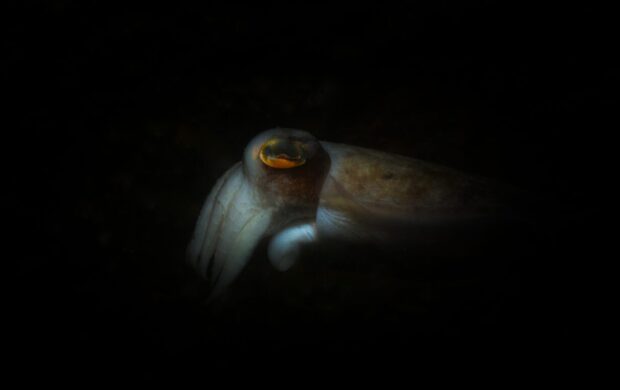
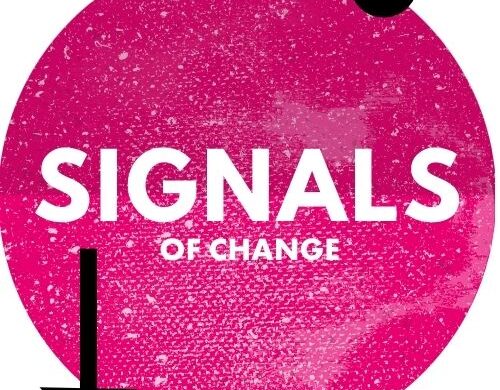

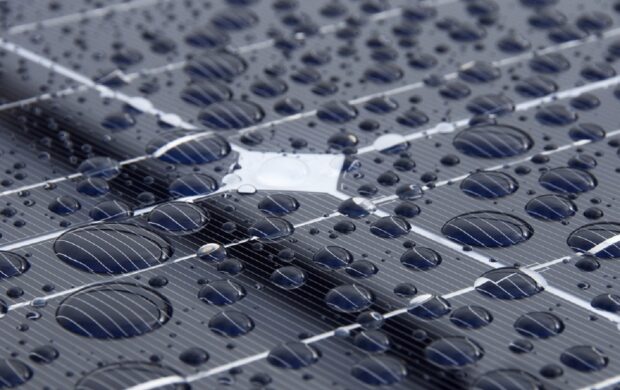
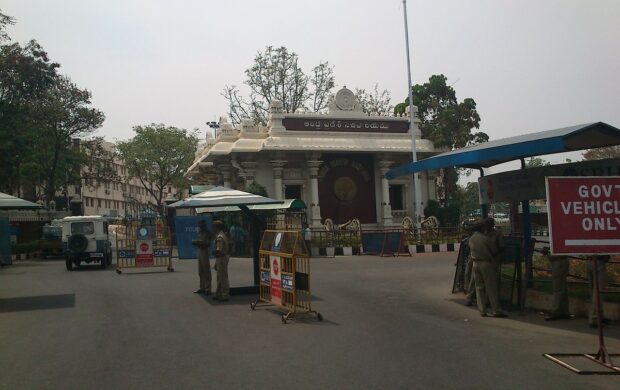
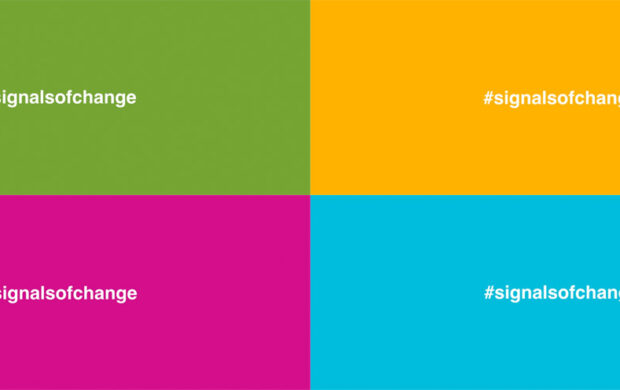
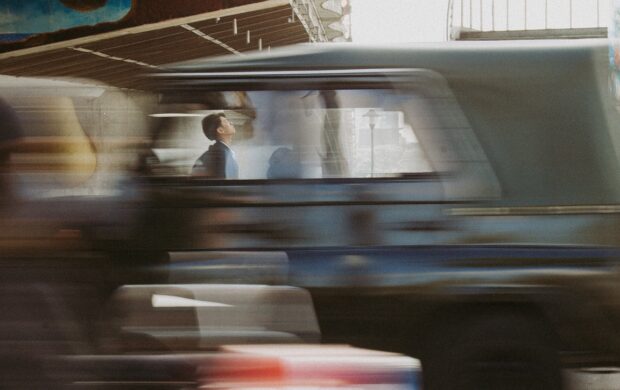

Join discussion